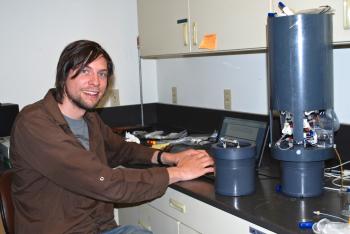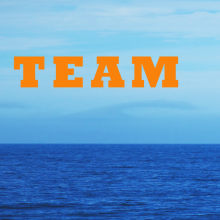Team Highlight: Alex Beaton
ITAE Collaborator Alex Beaton talks about his contribution to the ITAE program
Alexander Beaton is a researcher and technology developer at the National Oceanography Centre (NOC) in Southampton, UK, where, as part of Dr Matt Mowlem’s Ocean Technology and Engineering Group, he works towards developing the next generation of chemical sensors and analysers for ocean science. Through a scientific collaboration, they are providing one of their nutrient sensors for installation on the ITAE buoy deployed in the Arctic during the summer of 2015.
What is your role with ITAE? We are collaborating with the ITAE project by providing a new type of nitrate sensor to install on an ITAE buoy to be deployed in the Arctic. The sensor was developed by our team of researchers at the National Oceanography Centre in the UK, and uses cutting edge “lab-on-a-chip” technology. Nitrate is a key-limiting nutrient in many parts of the ocean, and is an important parameter to measure when studying ocean chemistry and biology. Nitrate is taken up by phytoplankton in the upper part of the water column, and can start to limit phytoplankton growth when levels become low.
What is unique about this project? Although other nitrate sensors can be purchased, they often struggle to measure the low nutrient levels that are found in many ocean surface waters. Our lab-on-a-chip sensor is different because it uses the high performance chemical analysis methods that are normally restricted to the laboratory, and miniaturizes them to work in situ. This means that we can produce very high quality measurements without needing to take seawater samples. By collaborating with the ITAE project, we hope to compare our lab-on-a-chip sensor to a commercially available nitrate sensor by deploying them both on a buoy in an environment where nutrient levels are very low. At present we do not sell the sensors, but we work with other researchers (such as our colleagues at NOAA and University of Washington) on a collaborative basis to deploy the sensors as widely as possible. Just this year we have deployed LOC sensors in rivers, estuaries, on the seafloor, in glacial meltwater streams, in the Arctic Ocean (Fram straight), as well as on the ITAE buoy in the Arctic.
What is it like to travel from the UK for a project in the US? I had a fun and productive trip to the USA to prepare the lab-on-a-chip sensor for installation on the ITAE buoy. It is always interesting to see how other groups function, and to have a look at the facilities at other oceanographic research centres. It was nice to visit at such a sunny and dry time of year, and the colleagues that I worked with while at PMEL (Peter, Noah and Calvin) where very friendly and helpful. The NOAA Sand Point campus struck me as a particularly pleasant place to work, and I enjoyed jogging along the Burke-Gilman Trail during the long sunny evenings.
What was the best part of visiting Seattle, WA? This was my fourth trip to the USA but my first to Seattle, and I would definitely like to come back. Before flying back home I managed to find a small amount of time to explore downtown and also the Fremont area, which I really liked. I love wildlife, and seeing ospreys and bald eagles so close to the NOAA campus was also pretty special.


